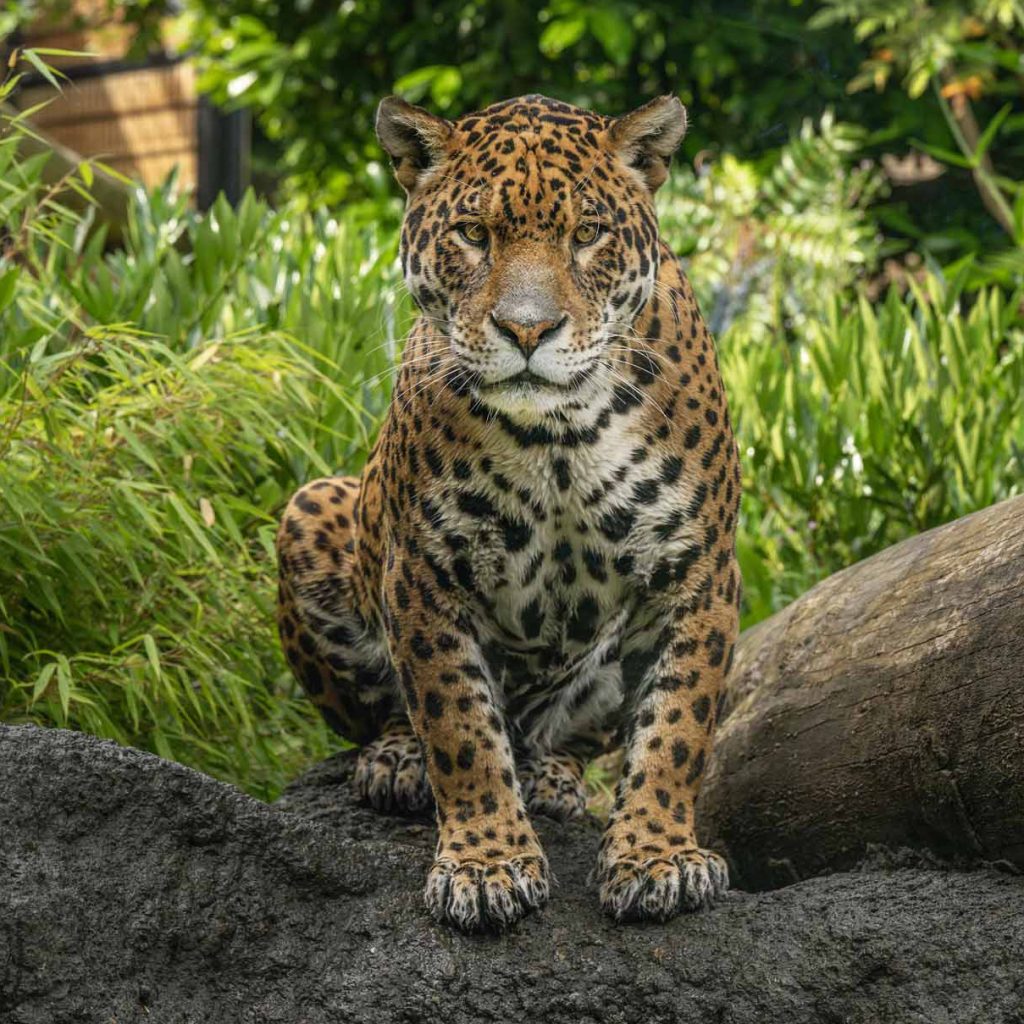Key Facts

The massive head and strong canines are adaptations for crushing skeletal material and cracking open well armoured prey such as turtles. Like most cats, the jaguar is solitary outside mother-cub groups.
The jaguar (Panthera onca) is the largest cat in the Americas and the third-largest cat in the world, after the tiger and lion. Known for its powerful build and distinctive coat with rosette patterns, the jaguar is a top predator that plays a critical role in maintaining the structure of the ecosystems it inhabits.
Kumal is a big cat with a heart of gold. He is a very relaxed jaguar but does have a playful side. He’s completely in love with Kedera and is often seen snuggling up to her at night time.
Kedera is our female jaguar, who has lived at Hertfordshire Zoo since December 2014. She was born in Poland and moved to the Zoo permanently as part of the European breeding programme. As part of that programme, she lives with Kumal and they have had a cub together in 2017. Kedera is a very active cat and enjoys playing with enrichment and pouncing on Kumal whenever she can. Although he is much larger than her, she makes up for it with sass and attitude.
While many of our cats are very fussy eaters, Kedera loves any type of meat given to her and will hoover it up as quickly as possible. Her favourite thing to play with is logs in the enclosure and boxes big enough to lay on!
Yes, jaguars are excellent swimmers and often hunt in and around water.
As apex predators, jaguars help regulate prey populations and maintain a balanced ecosystem.
Jaguars are more robust, have shorter tails, and larger heads than leopards. Jaguars also have rosettes with central spots, unlike leopards.

Social